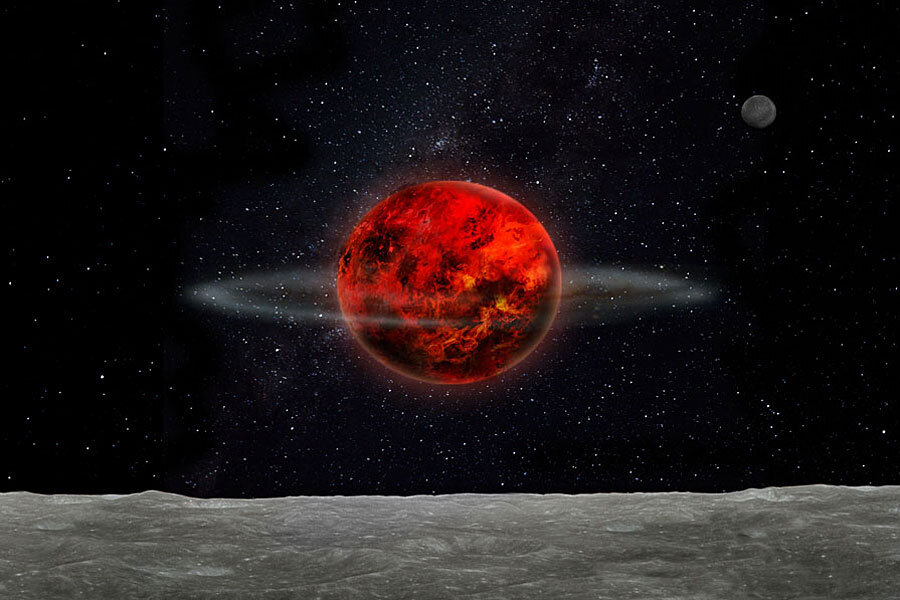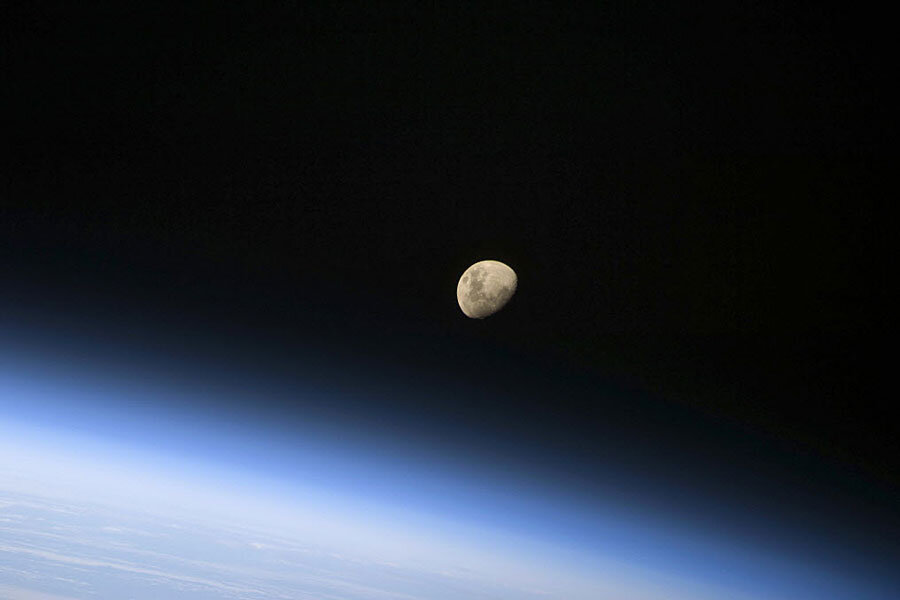A strong tug might have pulled the moon to its inclined orbit
Loading...
The moon’s orbital plane, its path around the Earth, is inclined. The angle of that incline has puzzled scientists.
The moon is generally thought to have formed in a disk of debris created when a planet-sized body slammed into the still-forming Earth some 4.5 billion years ago. In that scenario, the plane of the moon's orbit should be inclined only 0.5 degrees off the plane of Earth’s current orbit. But, in what’s called the "lunar inclination problem," the moon's orbital plane is actually angled at about 5 degrees.
Now, researchers propose that a separate, later cosmic event pulled the moon into its current tenfold greater incline.
In the new model, a small planetary body swung by the early Earth, tugging at the moon. That gravitational force could explain the moon's inclined orbital plane, according to a new paper published Wednesday in the journal Nature.
"This would be a natural way to have the moon start in an equatorial orbit and, without invoking any special circumstances, to naturally come out with the system that we have," says Kaveh Pahlevan, author of the study and the Henri Poincaré Fellow at the Observatory of Côte d'Azur, in an interview with The Christian Science Monitor.
"We did a numerical experiment where we considered that lunar formation happened in the context of Earth’s formation," says Dr. Pahlevan.
"There are collisions in Earth’s formation that happened both before the moon-forming event and after," Pahlevan says. Those collisions brought more material to the early Earth, making it to grow. "We wanted to test whether the accretion that happened after lunar formation can be the cause of this tenfold additional excitation of the lunar orbit."
The researchers' numerical model simulated many flybys of cosmic bodies of about the same mass of the moon or less. Using these models, the scientists were able to examine the effects of such close encounters with the early Earth-moon system.
"We’ve had this idea that Earth may have accreted a small amount of mass after the moon formed," says Pahlevan. "As the Earth is accreting, there are bodies in its vicinity and before any particular body collides with the Earth, it has many misses. This is how it can potentially tug at the moon and alter and 'excite' its orbit."
Such a collision-less interaction could explain why the moon’s orbital plane is angled tenfold higher than expected.
Other explanations have been proposed in the past, says Pahlevan. "[They] involve events that are more or less simultaneous with moon formation,” he says.
In the previous models, the excitation that angled the moon's orbital plane happened as part of the aftermath of the moon-forming collision itself, in the thousand years following the event, Pahlevan says. "Whereas our scenario envisions that the moon in fact did start in that well-behaved equatorial orbit and only much later, millions or tens of millions years later, its orbit was excited."
Pahlevan says the results surprised him. "We expected the lunar orbit to be excitable, but I didn’t anticipate it to be this sensitive, this excitable [after] collision-less events," he says.
There’s still much more work to be done. That sensitivity leads to further research and the new model still needs more testing, says Pahlevan.
Although the incline of the moon’s orbital plane puzzles scientists, it is also the reason lunar eclipses are special. "The fact that the lunar orbit is inclined by ~5 degrees from the Earth's orbital plane is the reason we do not have eclipses every month," Pahlevan explains in an e-mail. "Since the moon itself subtends ~0.5 degree on the sky as seen from Earth, if the lunar orbit were only inclined by ~0.5 degree, we would have had at least partial solar eclipses every month!"
"The story of the moon’s formation is part of the story of Earth’s formation," says Pahlevan in the interview. "So this is really a chapter in the story about how the Earth came to be the planet that it is. The record of how the Earth formed is fragmentary, so any characteristic of the modern system that can let us see and infer that very distant history is valuable. It provides a new window into our own origin story."









